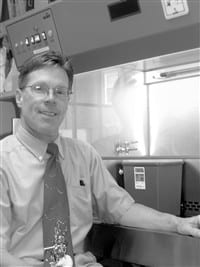Workforce Study Details Physician Shortages, Recruiting Challenges
WALTHAM — The Mass. Medical Society (MMS) has released its annual study of the state’s physician workforce, showing an eighth consecutive year of shortages of primary-care physicians, stark differences in recruitment and retention among the state’s five regional labor markets, and high levels of knowledge by physicians with state reform initiatives and emerging care models.
The 2013 Physician Workforce Study is the society’s 12th annual comprehensive look at the physician workforce in Massachusetts and is based on a survey of practicing physicians across the state. Among the topics examined are the supply of physicians, recruitment and retention, satisfaction with the profession and practice environment, familiarity with health-reform efforts, the impact of professional liability concerns on the practice of medicine, and knowledge of and willingness to participate in global payment programs and accountable-care organizations.
MMS President Dr. Ronald Dunlap said the 2013 study revealed continuing difficulties as well as improvements within the physician labor force.
“The supply of physicians in the state remains under stress, notably with primary care,” he noted, “and recruitment and retention continue to be difficult, especially for less populated areas of the state. Those factors affect patient access to care. On the plus side, physician satisfaction with the profession remains high, more physicians are becoming familiar with reform initiatives, such as global payments and accountable-care organizations, and more physicians indicated they are likely to move to global payments to reduce healthcare costs.”
Shortages and Recruitment
The medical society’s analysis found four specialties to be in critical or severe shortage: family medicine, internal medicine, neurology, and gastroenterology. The primary-care specialties of family medicine and internal medicine were recorded with shortages for the eighth consecutive year. A trend analysis over the last five years shows that seven specialties have been in short supply in at least three of those five years: family medicine, internal medicine, psychiatry, dermatology, general surgery, neurology, and urology.
In addition, the study showed striking differences in physician recruitment and retention among the state’s five regional labor markets: Boston/Greater Boston, New Bedford/Barnstable, Worcester, Springfield, and Pittsfield/Western Mass.
With the Boston/Greater Boston market as a baseline for comparison, the study shows that it is three times as difficult to fill physician vacancies in the Pittsfield/Western Mass. market, twice as difficult in the Springfield market, and more than one and half times as difficult for the Worcester and New Bedford/Barnstable regions than it is for the Boston/Greater Boston region. In every region of the state, at least half of the physicians said the pool of physicians from which to recruit was inadequate.
Health Reform
For the second year in row, the study asked physicians about their knowledge of state healthcare reform and payment-reform initiatives being undertaken in the Commonwealth, including global payments and accountable-care organizations (ACOs).
• Just under half (49{06cf2b9696b159f874511d23dbc893eb1ac83014175ed30550cfff22781411e5}) of respondents said they were familiar with Chapter 224, the state’s health-reform law on cost containment passed in 2012; 24{06cf2b9696b159f874511d23dbc893eb1ac83014175ed30550cfff22781411e5} said they were not familiar; and 27{06cf2b9696b159f874511d23dbc893eb1ac83014175ed30550cfff22781411e5} indicated they were unsure.
• Familiarity with global payments remains high, with 59{06cf2b9696b159f874511d23dbc893eb1ac83014175ed30550cfff22781411e5} of respondents indicating they are either very or somewhat familiar with global payments.
• More physicians (54{06cf2b9696b159f874511d23dbc893eb1ac83014175ed30550cfff22781411e5}, up 5{06cf2b9696b159f874511d23dbc893eb1ac83014175ed30550cfff22781411e5} from last year) said they were likely, and fewer (46{06cf2b9696b159f874511d23dbc893eb1ac83014175ed30550cfff22781411e5}, down 5{06cf2b9696b159f874511d23dbc893eb1ac83014175ed30550cfff22781411e5}) said they were not likely, to participate in a voluntary global payment system.
• Employed physicians (61{06cf2b9696b159f874511d23dbc893eb1ac83014175ed30550cfff22781411e5}) are more likely to participate in global payments than self-employed physicians (44{06cf2b9696b159f874511d23dbc893eb1ac83014175ed30550cfff22781411e5})
• Familiarity with ACOs remains high, with 71{06cf2b9696b159f874511d23dbc893eb1ac83014175ed30550cfff22781411e5} of physicians saying they were either very or somewhat familiar with ACOs.
• Of those physician practices that were familiar with ACOs, 42{06cf2b9696b159f874511d23dbc893eb1ac83014175ed30550cfff22781411e5} are currently part of an ACO.
• Of those physician practices that were familiar with ACOs, more primary-care physicians (49{06cf2b9696b159f874511d23dbc893eb1ac83014175ed30550cfff22781411e5}) were part of an ACO than specialists (38{06cf2b9696b159f874511d23dbc893eb1ac83014175ed30550cfff22781411e5}).
Physician Satisfaction
The 2013 study recorded physician satisfaction with the profession of medicine, the practice environment in Massachusetts, and time spent on patient care versus administrative tasks.
•
More than three-quarters (77{06cf2b9696b159f874511d23dbc893eb1ac83014175ed30550cfff22781411e5}) of Massachusetts physicians find their careers in medicine rewarding. Despite a slight drop (1{06cf2b9696b159f874511d23dbc893eb1ac83014175ed30550cfff22781411e5}) from the previous year, this figure has remained relatively constant over the last four years.
More than three-quarters (77{06cf2b9696b159f874511d23dbc893eb1ac83014175ed30550cfff22781411e5}) of Massachusetts physicians find their careers in medicine rewarding. Despite a slight drop (1{06cf2b9696b159f874511d23dbc893eb1ac83014175ed30550cfff22781411e5}) from the previous year, this figure has remained relatively constant over the last four years.
• Fewer than half (43{06cf2b9696b159f874511d23dbc893eb1ac83014175ed30550cfff22781411e5}) of physicians expressed satisfaction with the practice environment in the state, with 39{06cf2b9696b159f874511d23dbc893eb1ac83014175ed30550cfff22781411e5} saying they are dissatisfied.
• More than half (53{06cf2b9696b159f874511d23dbc893eb1ac83014175ed30550cfff22781411e5}) of physicians are dissatisfied with the division between patient care and administrative tasks. This percentage has remained constant over the last three years and is especially pronounced among primary-care physicians (family medicine and internal medicine), with 59{06cf2b9696b159f874511d23dbc893eb1ac83014175ed30550cfff22781411e5} expressing dissatisfaction with the tradeoff between patient care and the administrative tasks they are required to perform.
Medical Malpractice
The 2013 study again found that the fear of being sued continues to have a negative influence on physicians and the practice of medicine, though less than in previous years. This finding is consistent with the society’s previous workforce studies.
While 36{06cf2b9696b159f874511d23dbc893eb1ac83014175ed30550cfff22781411e5} of physicians said they have altered or limited the scope of their practice because of the fear of being sued, that represents a decrease of 5{06cf2b9696b159f874511d23dbc893eb1ac83014175ed30550cfff22781411e5} from 2012.
A third or more of physicians in nine specialties said they have altered or limited their practice because of the fear of being sued: general surgery (64{06cf2b9696b159f874511d23dbc893eb1ac83014175ed30550cfff22781411e5}), emergency medicine (61{06cf2b9696b159f874511d23dbc893eb1ac83014175ed30550cfff22781411e5}), orthopedics (50{06cf2b9696b159f874511d23dbc893eb1ac83014175ed30550cfff22781411e5}), urology (63{06cf2b9696b159f874511d23dbc893eb1ac83014175ed30550cfff22781411e5}), neurology (45{06cf2b9696b159f874511d23dbc893eb1ac83014175ed30550cfff22781411e5}), cardiology (41{06cf2b9696b159f874511d23dbc893eb1ac83014175ed30550cfff22781411e5}), radiology (39{06cf2b9696b159f874511d23dbc893eb1ac83014175ed30550cfff22781411e5}), oncology (38{06cf2b9696b159f874511d23dbc893eb1ac83014175ed30550cfff22781411e5}), and obstetrics/gynecology (33{06cf2b9696b159f874511d23dbc893eb1ac83014175ed30550cfff22781411e5}).
The Mass. Medical Society’s 2013 Physician Workforce Study was conducted in collaboration with economist James Howell, Ph.D. of the Howell Group. The complete report is available at www.massmed.org/


Comments are closed.